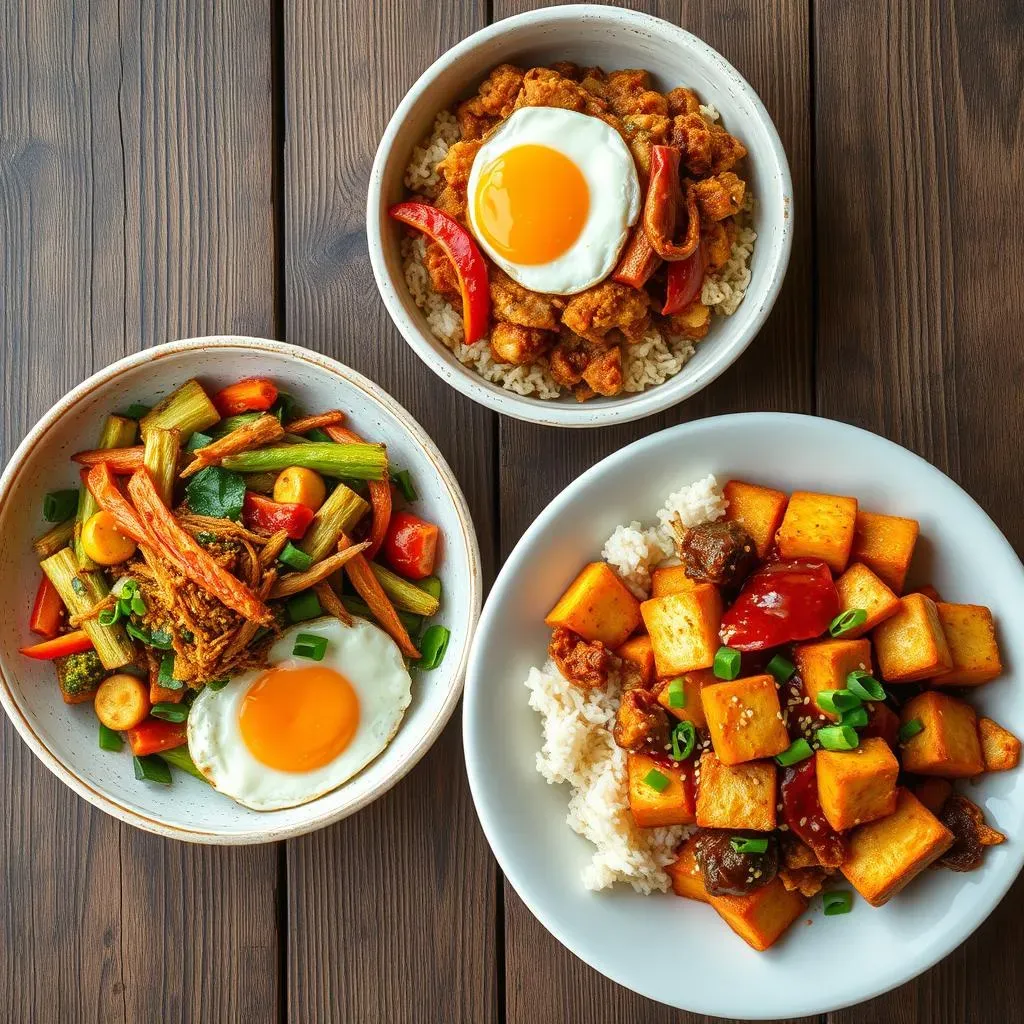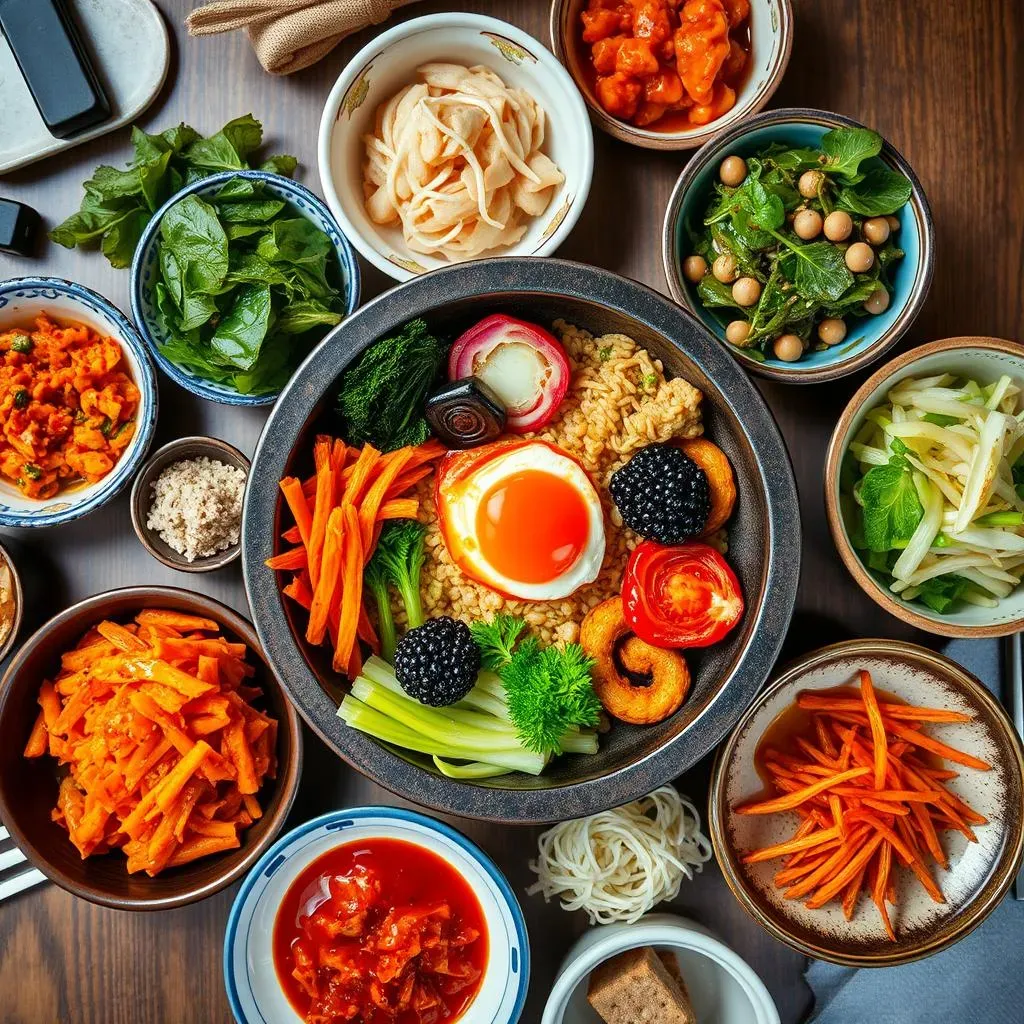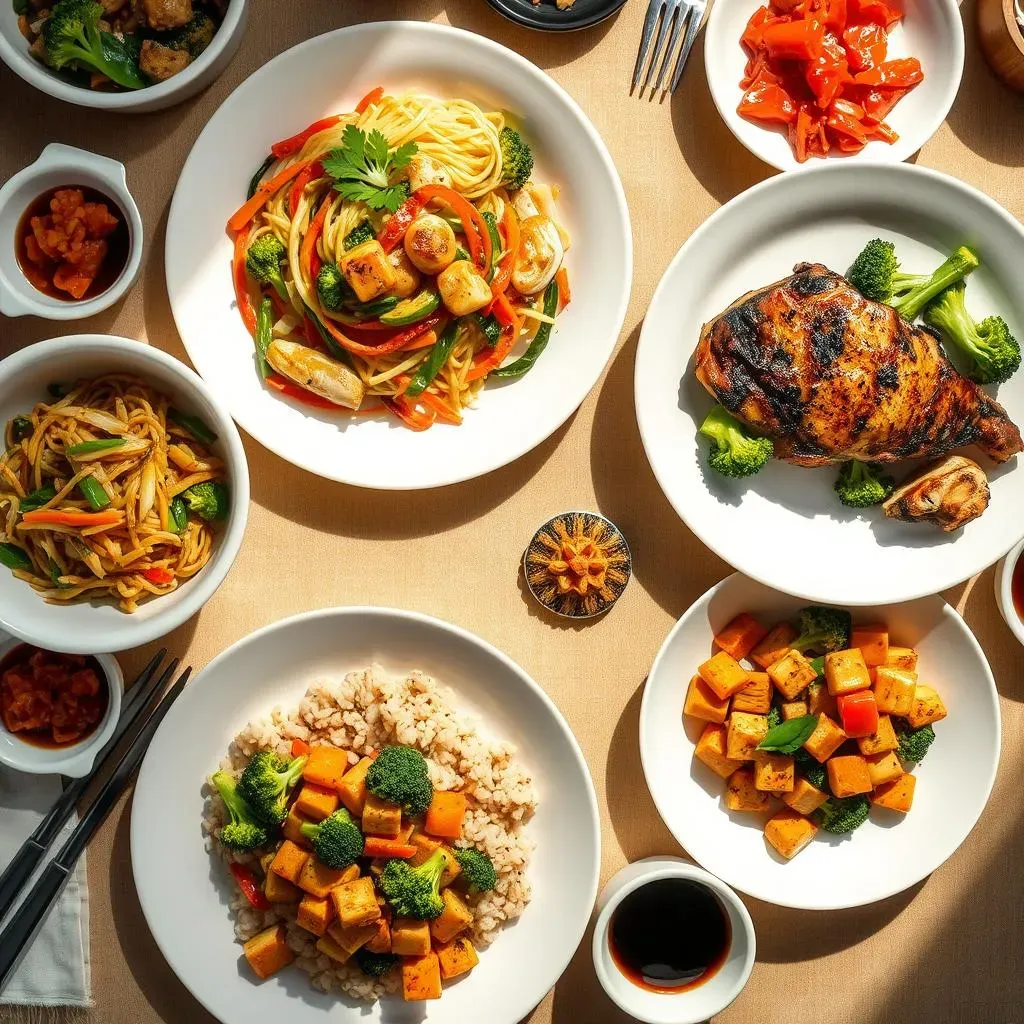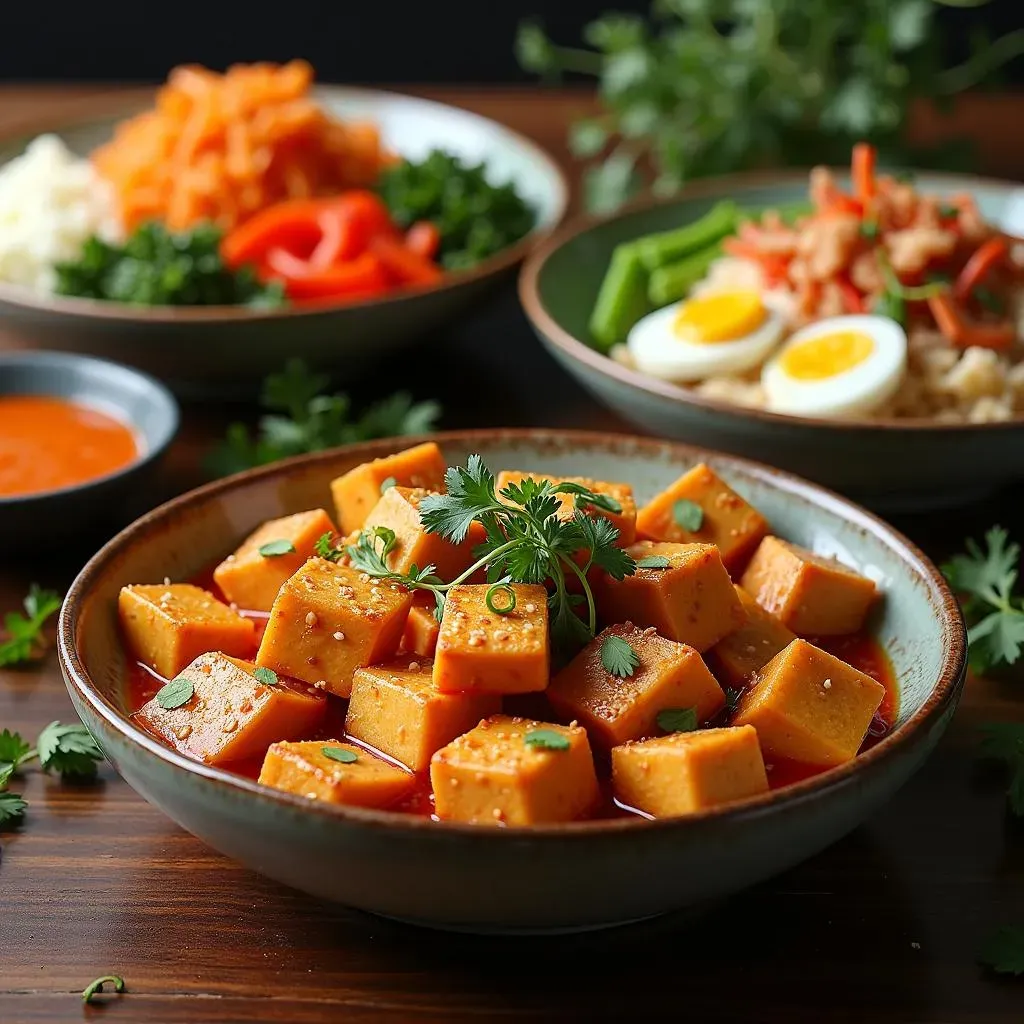Table of Contents
Craving something exciting and nutritious for dinner? Look no further than the vibrant world of Korean cuisine! A korean healthy dinner doesn't have to be complicated or time-consuming. Forget the greasy takeout; we're diving into a treasure trove of quick, easy, and incredibly flavorful recipes that will nourish your body and tantalize your taste buds. From sizzling stir-fries packed with colorful vegetables to comforting soups brimming with umami, Korean food offers a delicious path to healthy eating.
Quick & Easy Korean Healthy Dinner Recipes for Weeknights

Quick & Easy Korean Healthy Dinner Recipes for Weeknights
Weeknights are hectic, and the last thing anyone wants is to spend hours slaving over a stove. That's where these quick & easy Korean healthy dinner recipes come to the rescue! We're talking about meals that can be whipped up in 30 minutes or less, using simple ingredients you can easily find at your local grocery store. Think beyond complicated dishes; instead, focus on flavorful shortcuts and clever ingredient combinations that deliver authentic Korean taste without the fuss.
One of my personal favorites is a speedy bibimbap. Forget meticulously arranging each topping; simply sauté some pre-cut veggies like spinach, carrots, and mushrooms with a little soy sauce and sesame oil. Top a bowl of rice with the veggies, a fried egg, a dollop of gochujang (Korean chili paste), and a drizzle of sesame oil. Boom! A complete and satisfying meal in minutes. Or how about a quick kimchi fried rice? Kimchi adds a tangy, spicy kick to plain rice, and you can toss in whatever leftover protein and veggies you have on hand.
- Speedy Bibimbap: Sautéed veggies, rice, fried egg, gochujang, sesame oil.
- Kimchi Fried Rice: Kimchi, rice, leftover protein, veggies.
- Tofu Stir-fry with Gochujang Sauce: Tofu, veggies, gochujang, soy sauce, garlic.
NutrientPacked Ingredients in Korean Healthy Dinners

NutrientPacked Ingredients in Korean Healthy Dinners
Korean cuisine isn't just about the delicious flavors; it's also a nutritional powerhouse! Many traditional Korean healthy dinners feature ingredients celebrated for their health benefits. Think of it as a delicious way to boost your well-being from the inside out. From gut-friendly fermented foods to antioxidant-rich vegetables, Korean cooking offers a symphony of nutrients that can support your overall health.
Let's talk about some of the stars of the show. Kimchi, the iconic fermented cabbage, is packed with probiotics that promote a healthy gut. Seaweed, another common ingredient, is a fantastic source of iodine, essential for thyroid function. And don't forget the abundance of colorful vegetables like spinach, bean sprouts, and mushrooms, which provide vitamins, minerals, and fiber. These nutrient-packed ingredients aren't just tasty; they're contributing to your health with every bite.
Ingredient | Key Nutrients | Health Benefits |
|---|---|---|
Kimchi | Probiotics, Vitamins A & C | Gut health, immune support |
Seaweed | Iodine, Iron, Calcium | Thyroid function, energy, bone health |
Spinach | Vitamins A & K, Iron | Vision, blood clotting, energy |
Flavorful Korean Healthy Dinner Ideas for Weight Loss

Flavorful Korean Healthy Dinner Ideas for Weight Loss
Embracing Flavor Without the Guilt
Weight loss doesn't have to mean bland, boring meals! Korean cuisine offers a fantastic array of flavorful korean healthy dinner ideas for weight loss that are both satisfying and waistline-friendly. The key is to focus on lean proteins, plenty of vegetables, and smart substitutions to keep the calorie count in check without sacrificing taste. Think vibrant flavors, exciting textures, and meals that leave you feeling full and energized, not deprived.
One of my go-to options is a lightened-up version of japchae, a popular glass noodle dish. Instead of using a lot of oil, I opt for stir-frying the vegetables in a non-stick pan with a splash of water or broth. I also use a smaller portion of noodles and load up on colorful veggies like bell peppers, onions, and mushrooms. The result is a delicious and satisfying meal that's packed with nutrients and relatively low in calories.
Lean Proteins and Veggie Power
When it comes to korean healthy dinners for weight loss, lean protein is your best friend. Tofu, chicken breast, fish, and lean cuts of beef are all excellent choices. Pair these proteins with an abundance of non-starchy vegetables like spinach, kale, broccoli, and bean sprouts to create a filling and nutritious meal that will keep you feeling satisfied for hours. Remember, vegetables are your allies in weight loss – they're low in calories, high in fiber, and packed with vitamins and minerals.
Consider a grilled chicken breast marinated in a gochujang-based sauce, served with a side of steamed broccoli and a small portion of brown rice. Or how about a tofu and vegetable stir-fry with a light soy sauce-based dressing? The possibilities are endless! The key is to be mindful of portion sizes and to choose cooking methods that minimize added fats.
Smart Swaps and Flavorful Sauces
A big part of enjoying flavorful korean healthy dinners while losing weight is making smart swaps and using flavorful sauces in moderation. For example, instead of using regular soy sauce, opt for low-sodium soy sauce to reduce your sodium intake. And when it comes to sauces, be mindful of the sugar content. Many Korean sauces, like bulgogi marinade, can be high in sugar. Try making your own sauces at home so you can control the ingredients and reduce the sugar content.
Another smart swap is to use cauliflower rice instead of white rice to cut down on carbs and calories. You can also try using zucchini noodles or kelp noodles instead of regular noodles in dishes like japchae. These simple swaps can make a big difference in the overall calorie count of your meal without sacrificing flavor or satisfaction.
Swap | Why it's Healthier |
|---|---|
Cauliflower Rice for White Rice | Lower in carbs and calories |
Low-Sodium Soy Sauce for Regular Soy Sauce | Reduces sodium intake |
Homemade Sauce for Store-Bought Sauce | Control ingredients and reduce sugar |
Vegetarian and Vegan Korean Healthy Dinner Options

Vegetarian and Vegan Korean Healthy Dinner Options
Tofu Takes Center Stage
Who says Korean food is all about meat? There's a fantastic world of vegetarian and vegan Korean healthy dinner options just waiting to be explored, and tofu is often the star of the show. This versatile ingredient soaks up flavors like a sponge, making it perfect for recreating classic Korean dishes without the meat. Whether you're a seasoned vegan or just looking to incorporate more plant-based meals into your diet, tofu can be a game-changer.
Think beyond bland, boring tofu! We're talking crispy pan-fried tofu with a spicy gochujang glaze, savory tofu stews simmered with kimchi and vegetables, and even grilled tofu skewers marinated in a sweet and savory soy sauce-based sauce. The possibilities are endless! Tofu is also a great source of protein, making it a satisfying and nutritious addition to any meal.
Veggie-Packed Delights
Korean cuisine is naturally abundant in vegetables, making it easy to create delicious and satisfying vegetarian and vegan Korean healthy dinners. From colorful stir-fries to hearty soups, there's no shortage of ways to incorporate a variety of vegetables into your meals. Think of it as a delicious way to load up on vitamins, minerals, and fiber!
Some of my favorite veggie-packed Korean dishes include bibimbap (hold the beef!), japchae (made with sweet potato noodles and lots of vegetables), and sundubu jjigae (a spicy soft tofu stew with mushrooms, zucchini, and other vegetables). You can also create your own custom stir-fries using your favorite vegetables and a flavorful Korean sauce. Don't be afraid to experiment and get creative!
Kimchi: The Vegan Secret Weapon
let's talk about kimchi. This fermented cabbage dish is a staple of Korean cuisine, and it's also a vegan powerhouse! Not only is kimchi incredibly flavorful, but it's also packed with probiotics that are great for your gut health. It's the perfect way to add a tangy, spicy kick to your vegetarian and vegan Korean healthy dinners.
You can add kimchi to just about anything! Toss it into stir-fries, add it to soups and stews, or even use it as a topping for rice bowls. Just be sure to check the ingredient list to make sure the kimchi is vegan-friendly, as some varieties may contain fish sauce. Once you've found a vegan kimchi you love, the possibilities are endless!
Dish | Vegan Adaptation |
|---|---|
Bibimbap | Omit beef, add extra vegetables and tofu |
Japchae | Use only vegetable oil, load up on vegetables |
Sundubu Jjigae | Use vegetable broth, omit seafood |
Tips for Planning Your Korean Healthy Dinner Meal Prep

Tips for Planning Your Korean Healthy Dinner Meal Prep
#1: The Power of Batch Cooking
Meal prepping can feel daunting, but it doesn't have to be an all-day affair! The key is to embrace the power of batch cooking. Choose one or two days a week to dedicate a few hours to cooking larger quantities of staple ingredients like rice, cooked proteins (tofu, chicken, beef), and your favorite vegetables. This way, you'll have a head start on your Korean healthy dinners throughout the week.
For example, you could cook a big batch of brown rice on Sunday and then use it in bibimbap, kimchi fried rice, or as a side dish for grilled chicken or tofu throughout the week. You can also pre-chop vegetables like onions, carrots, and bell peppers and store them in airtight containers in the refrigerator. This will save you valuable time during the week when you're trying to get dinner on the table quickly.
#2: Sauce It Up: Make Your Own Korean Sauces
Sauces are the heart and soul of Korean cuisine, but many store-bought sauces can be high in sugar and sodium. A great tip for your Korean healthy dinner meal prep is to make your own sauces in advance! This way, you can control the ingredients and customize the flavors to your liking. Plus, homemade sauces often taste even better than store-bought versions!
Some essential Korean sauces to have on hand include gochujang sauce (made with Korean chili paste), soy sauce-based marinade (perfect for bulgogi or grilled chicken), and a simple sesame oil and soy sauce dressing (great for salads or stir-fries). You can find tons of recipes for these sauces online, and they're usually very easy to make. Store your homemade sauces in airtight containers in the refrigerator, and they'll be ready to add a burst of flavor to your meals throughout the week.
#3: Smart Storage Solutions
Proper storage is essential for keeping your prepped ingredients fresh and delicious all week long. Invest in a good set of airtight containers to store your cooked grains, proteins, vegetables, and sauces. Glass containers are a great option because they're non-toxic and easy to clean, but plastic containers work well too.
When storing cooked grains and proteins, make sure to let them cool completely before transferring them to the refrigerator. This will prevent condensation from forming, which can lead to spoilage. It's also a good idea to label your containers with the date you prepped the ingredients so you know when they need to be used by. With a little planning and smart storage solutions, you can enjoy fresh and delicious Korean healthy dinners all week long!
Ingredient | Storage Tips | Shelf Life |
|---|---|---|
Cooked Rice | Cool completely, store in airtight container | 4-5 days |
Cooked Protein | Cool completely, store in airtight container | 3-4 days |
Chopped Vegetables | Store in airtight container with a paper towel to absorb moisture | 3-5 days |
Homemade Sauces | Store in airtight container in the refrigerator | 1-2 weeks |
Your Korean Healthy Dinner Journey Awaits
Embracing a korean healthy dinner routine is more than just following recipes; it's about discovering a world of flavors and ingredients that nourish your body and soul. From quick weeknight fixes to carefully planned meal preps, the options are endless. So, grab your chopsticks, experiment with gochujang, and embark on your own Korean culinary adventure. Here's to delicious, healthy, and happy eating!